Jan. 22, 2024 – Whether they’re practicing sight words or working on phonics, implementing solid reading strategies for elementary students is vital to their long-term academic success. Just ask second-grade teacher Shawnie Hodgson.
“If they don’t get the foundation skills – the most important years to build those skills – then they’re going keep falling farther and farther behind,” shares the Brookview Elementary School teacher.
Years of research confirm the importance of building a strong literacy foundation during a student’s earliest years. In fact, studies show that students who can’t read at grade level by the third grade are less likely to graduate from high school.
It’s why we sought out the expertise of three teachers — kindergarten, first, and second grade — to discover their top strategies for young readers and learn what parents can do to help cultivate a love for literacy at home.
Reading Strategies for Elementary Students
According to Duval County Public Schools Director K-12 Literacy Dr. Brandie Berry, the most successful strategies begin with a body of research known as the Science of Reading. This breaks reading down into two major skillsets — word recognition and language comprehension.
To put each simply:
- Word recognition involves recognizing letters and the sounds they represent to read words until they are recognized automatically.
- Language comprehension involves using vocabulary, background knowledge, and a child’s understanding of sentence and text structure to make meaning from the words.
Berry stresses that both word recognition and language comprehension must happen at the same time for students to become skilled readers. Here’s a closer look at how three teachers are incorporating both skill sets in their classrooms.
Recognizing Letters and Sounds
Before elementary students can take on advanced reading strategies, they must first master the basics.
“The first step in reading and understanding a text is you have to be able to read the words — the word recognition,” says Berry. “You have to be able to sound it out or automatically recognize that word.”
One of the fundamentals of reading is phonemic awareness, or the ability to hear sounds. If anyone understands the importance of students mastering phonemic awareness and phonics, it’s Kindergarten teacher Peyton Talley.
The Importance of Phonics
“In the beginning, they either come in knowing absolutely nothing, or they come in knowing everything,” Talley shares. “So the first thing we just do (is) letters. Letters and sounds.”
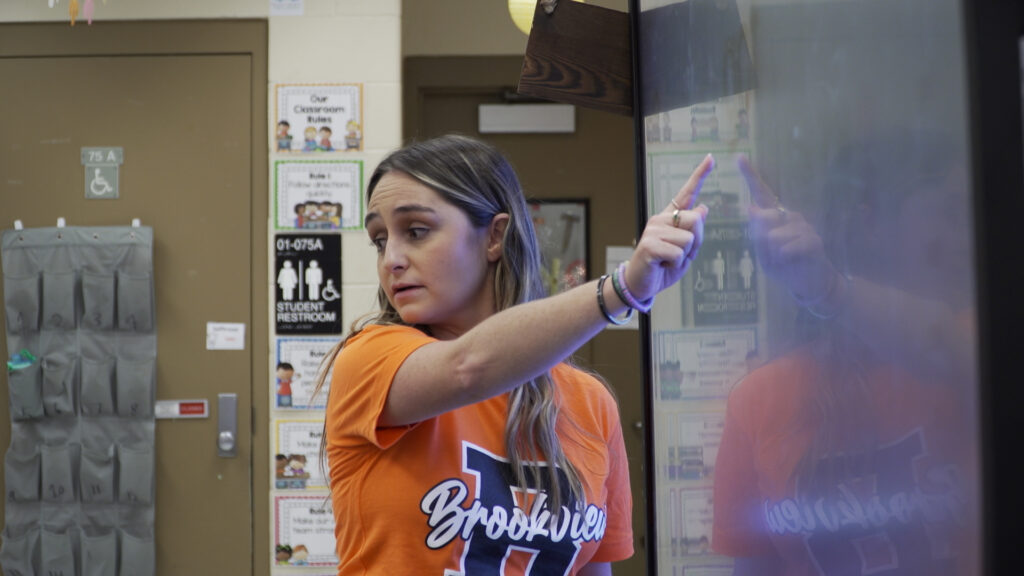
Part of Talley’s strategy for raising her students’ phonemic awareness and phonics skills includes running through multiple auditory and visual drills daily. One drill involves Talley gathering her students on the carpet before a large screen. Students then practice identifying letters and sounds one by one, with their knowledge and recall gradually becoming automatic.
Growing in Word Recognition
As students learn letters and sounds, educators say they can begin putting them together and recognizing words.
“They’re working on their decoding, which is like looking at the word on the page, sounding it out, putting all those sounds together and saying, ‘Oh, I know what that word is’,” explains Berry.
As recognizing words becomes more automatic, Berry says students will begin to achieve sight recognition — not having to sound out every word.
“That’s fluency,” she says. “The less you have to sound it out, the faster you can read it, the better.”
Incorporating active, hands-on instruction with UFLI
Through Duval County Public Schools’ district-wide implementation of the research and evidence-based curriculum UFLI Foundations, Brookview Elementary Principal Tracey Kendrick believes students are taking a more active approach to phonics and word recognition.
“The kids aren’t passive,” says Kendrick. “The kids are doing the work.”
UFLI Foundations, taught in grades K-2, provides students with daily instruction in foundational reading strategies through a variety of interactive activities and resources like magnetic letters and writing boards.
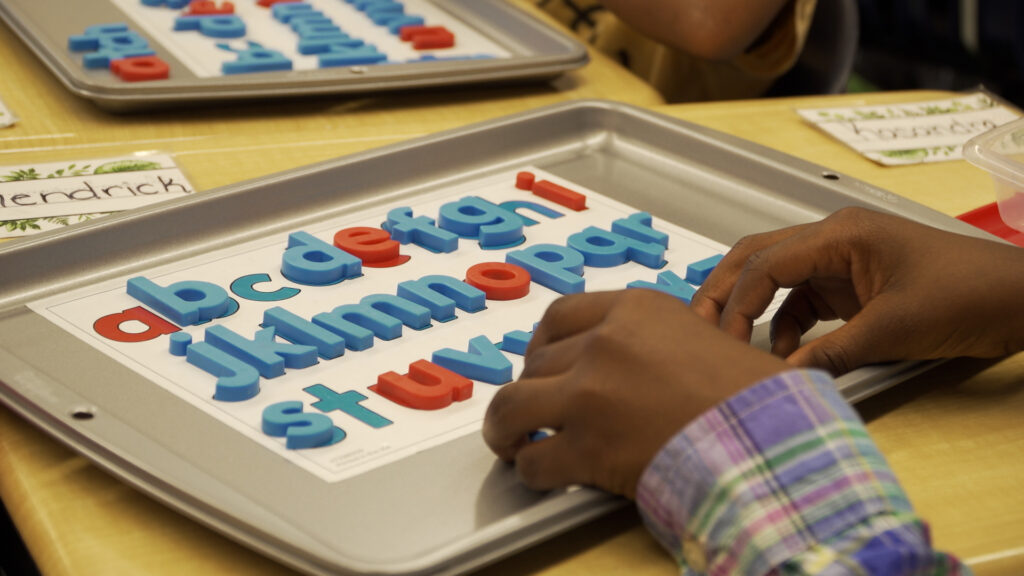
“It’s very hands-on for them,” agrees Talley. “They’re taking apart the letters, they’re blending it, they’re segmenting it…and they love that.”
Kendrick adds that as students become active participants in their reading journey, they take a greater interest in growing and meeting their goals. They’re strategies Kendrick calls so successful, her kindergarten teachers are seeing the highest test scores they’ve seen in years.
“In the past, it was dependent on the teacher doing the work,” says Kendrick. “But now, the kids are active.”
How Parents Can Help Elementary Students with Letters, Sounds, and Words
Experts agree — one of the most important reading strategies for elementary students is daily reading. Studies have shown that by spending twenty minutes a day reading or being read to, students have the potential to be exposed to over 1 million words in one year.
Parents can additionally support children by:
- Reading books aloud together. As you read, help children identify letters and sound out words.
- Practicing reading “drills” at home. Review letters and sounds with homemade flashcards.
- Encouraging students to identify and sound out letters they see. This can take during everyday tasks like seeing billboards, at the grocery store, in restaurants, and more.
Teachers also encourage elementary school parents to take advantage of instructional materials being sent home from school.
“We send home word lists each week, so the parents can be engaged at home,” says Hodgson. “So they’re building those words with their children, they’re reading those passages every night at home. So just being engaged, seeing what we’re doing at school, and then being able to do it at home also.”
Language Comprehension
As students begin to read and identify words, educators say it’s equally important they understand what they are reading. Through language comprehension, Berry says students are processing words and making meaning from what they are reading.
“We talk a lot about vocabulary and whether the students understand the meaning of the word” explains Berry. “We work on building students’ background knowledge, adding to any prior knowledge they may have about a topic before they read about it.”
Elements of Language Comprehension: Vocabulary, Background Knowledge, and More
Some elements of language comprehension include:
- Vocabulary – understanding the meaning of a word
- Language structures – understanding different sentence structures
- Verbal Reasoning – understanding concepts like figurative language
- Literacy knowledge – understanding print concepts or different genres of literature
- Background knowledge – understanding the topic of the text
“We know from research that building background knowledge is the number one equalizer for students that may be behind in their development of comprehension skills,” says Berry. “ Oftentimes, they just haven’t had the exposure to different concepts and topics that their peers have. Giving them time to build their background knowledge before reading about a topic helps them better comprehend the text and puts them on a more equal footing with their peers.”
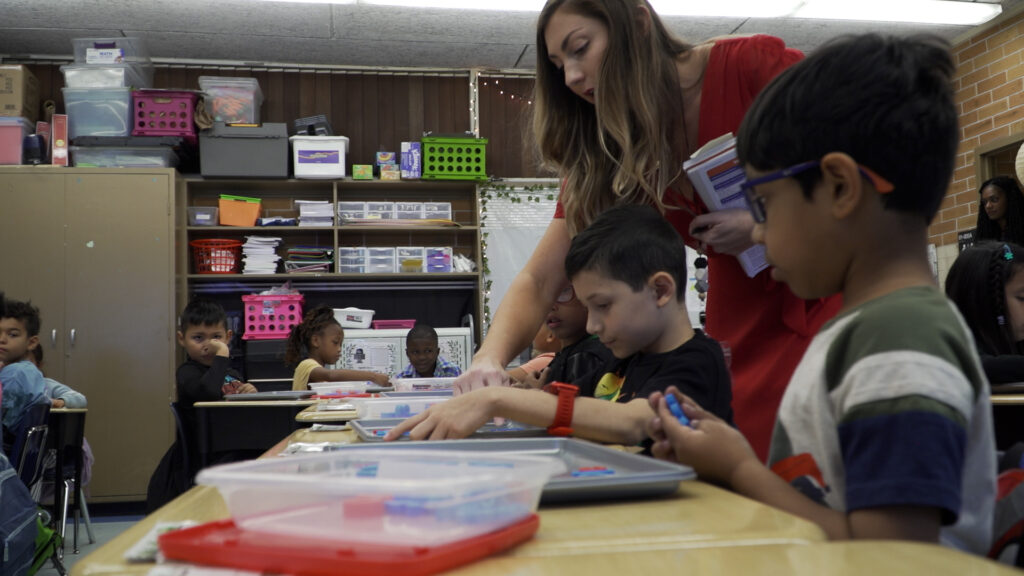
Incorporating Language Comprehension into Instruction
Berry says for younger elementary students, language comprehension instruction typically takes place in times of shared reading. For first-grade teacher Gail Meloni, that includes using group reading time to lead her students through thought-provoking questions and activities.
“We talk about the words that they are unfamiliar with and what they mean,” shares the Brookview teacher. “And then as they read the passage, and they finish reading, then they have to draw a picture that goes with the story.”
Second-grade teacher Shawnie Hodgson says connecting new words to real, everyday experiences also helps students build their knowledge and vocabulary.
“Some of them don’t know what the word ‘pitch’ was, so just connecting it to things that they like, activities that they like,” explains Hodgson. “I have a lot of boys in my class, they love baseball. So now when they get ready to read and write those words and read it in the passage, they’re making personal connections back to the text.”
How Parents Can Promote Language Comprehension Strategies at Home
Meloni says a key in helping students grow in their language comprehension skills is to encourage them to read books on subjects they enjoy. It’s a practice she employs in her classroom.
“We let the kids pick some books to take home. They look through the books and they pick the books that they want to take,” shares Meloni. “If they pick a book they’re interested in, they will read it more at home.”
Other ways parents can help children in language comprehension include:
- Engaging in “fun curiosity.” For instance, if your child likes spiders, watch a documentary or find books on the subject.
- Introducing new words to your children. As you use new words, explain what they mean.
- Asking students reflective questions. Engage them with questions about what they’re reading or learning about.
“If families really want to do stuff with their kids and they don’t want to just be constantly sitting in front of a book, there’s lots of ways to expose your children to knowledge,” Berry explains. “We can watch videos about things, and we can just talk about things and expose children to all kinds of information.”
“It builds them up to be better readers, and that’s something every family member can do, because every family member has things they know. “
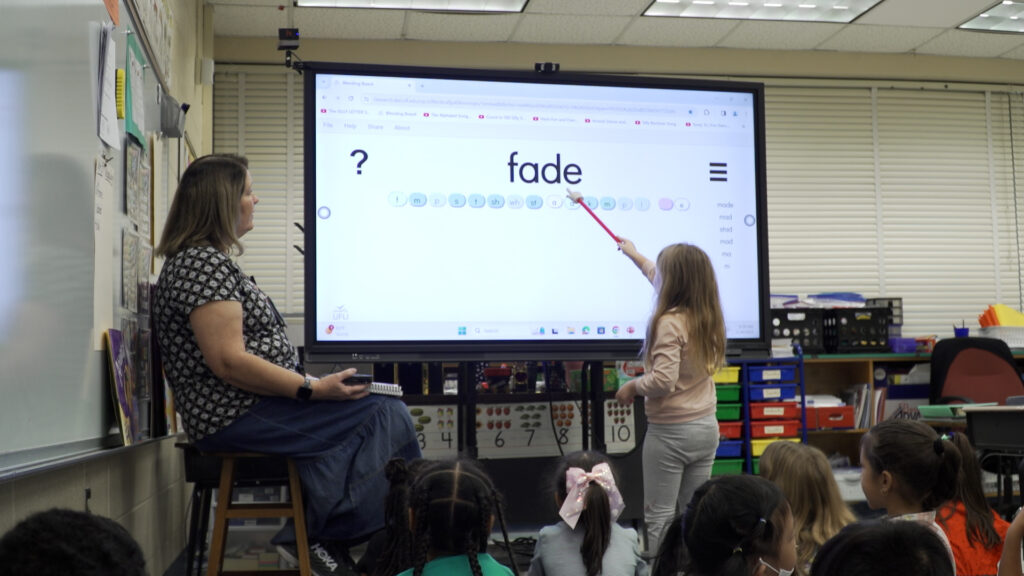
Repetition and Practice: Keys to Mastering Reading Strategies for Elementary Students
As the old expression goes, “Practice is the key to mastery.” And each of the Brookview Elementary educators we spoke to agree — repetition, practice, and plenty of patience are the keys to any elementary student becoming a strong, fluent reader.
By encouraging children in their journey, teachers say students will not only grow in their skills, but they may also discover something even greater — a true love for literacy.
“I think the best thing about being a reading teacher is that want them to love to read,” says Hodgson. “I don’t want them to come to me be like ‘Oh, it’s reading again.’ So, making it fun, making it engaging….so as they continue to grow, they love and have that passion for reading.”

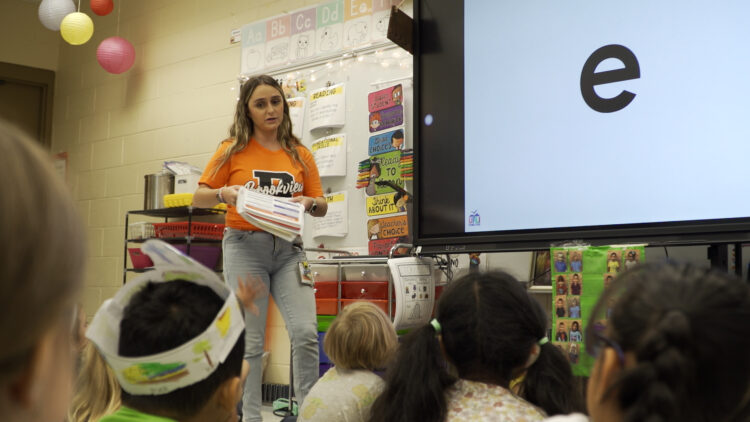







1 Comment
Comments are closed.